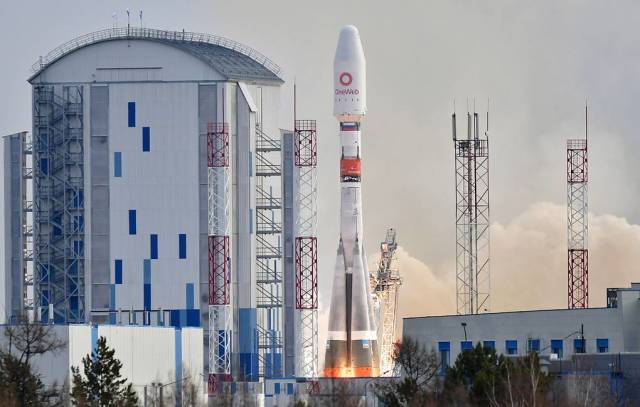Soyuz-2.1b will provide almost the same output mass at the new inclination as Soyuz-2.1a at the previous inclination of the ISS at 51.6 degrees
MOSCOW, July 26. /tass/. A serious reduction in the mass of the Soyuz spacecraft due to the transition to a new inclination, which will be used by the Russian orbital service station (ROSS), will not be required. The Soyuz-2.1b launch vehicle will provide almost the same output mass at the new inclination as the Soyuz-2.1a at the previous inclination of the ISS at 51.6 degrees, said Vladimir Solovyov, flight director of the Russian segment of the ISS, General designer for manned systems and complexes of the Russian Federation, general designer of RSC Energia in an interview with the magazine "Russian Space".
"At the first stage, a well-developed Soyuz spacecraft is necessary, and the transition to a more powerful Soyuz-2.1b carrier will provide almost the same output mass at the new inclination as Soyuz-2.1a at an inclination of 51.6 degrees. So a serious reduction in the mass of the Soyuz spacecraft, and therefore modifications will not be required. The Soyuz spacecraft will be able to fly to the high-latitude ROSS in a three-seat version," he said.
On Tuesday, the Director General of Roscosmos, Yuri Borisov, at the first meeting with Russian President Vladimir Putin as head of the state corporation, announced that Russia will withdraw from the International Space Station (ISS) project after 2024, when the formation of a national orbital station will begin.
The decision to create ROSS was made in 2021, and in early May 2022, Roscosmos signed a contract with RSC Energia to create a draft design of a new station.
At the moment, the preliminary design of ROSS is underway in the Russian Federation. It is assumed that it will fly in a high-latitude (polar) orbit with an inclination of 96-98 degrees, which will expand the possibilities for viewing the entire territory of Russia. Earlier, former Roscosmos CEO Dmitry Rogozin in an interview with the Rossiya-24 TV channel said that the state corporation had decided on the inclination of the orbit of a promising Russian orbital service station, as well as its architecture and composition in general.
It is assumed that at the first stage of deployment it will consist of four modules designed for two astronauts, and later two more modules and a service platform will be added to it, which will increase the crew to four people. At the same time, at the end of May, Rogozin said that the station would be automatic, and people would participate only in the delivery and installation of the payload, testing and repair work: "This is not a hotel for astronauts and tourists."
The previous head of Roscosmos also did not rule out that ROSS could become "military-applied" if by the time of its deployment the attitude towards Russia would be hostile, and the number of its allies would be limited.
It is assumed that the first module of the new station should be ready in 2025, but a final decision on the timing of its formation has not yet been made. At the same time, ROSS and the ISS can work in parallel for several years, as Rogozin said at the end of February, due to financial constraints, it is difficult to simultaneously participate in an international project and build a new station, therefore a certain "overlap period" is needed.

